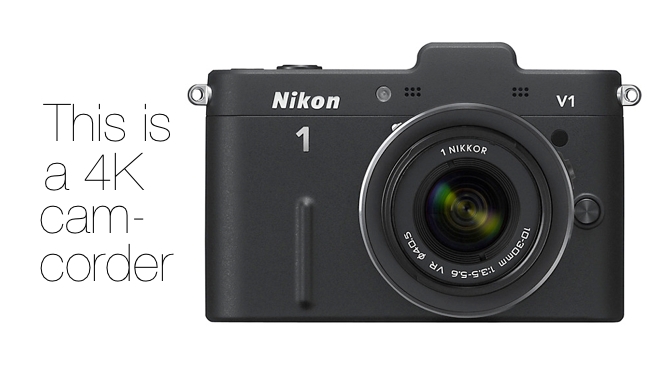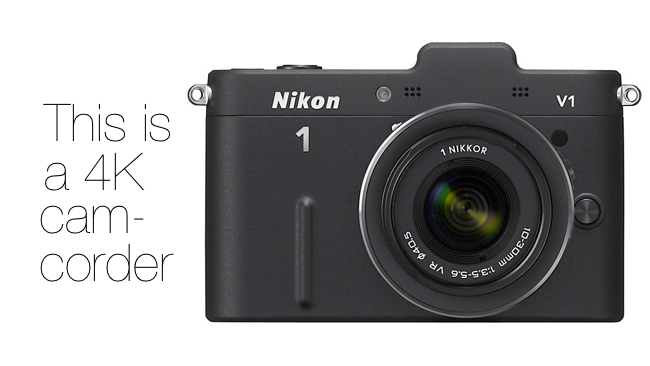
 This is a 4K camcorder
This is a 4K camcorder
Sensor technology is now moving so fast that it’s becoming possible to do things which, until recently, would have been a bit hair-raising price-wise
The new Nikon v1 is a handy example of this. The headline feature, a one-second blip of 60p 4K raw recording, is essentially an expression of the capability of the sensor, coupled with enough fast memory to buffer the data while it’s written to the comparatively slow SD card. This is only made practical by the availability of cheap, low-power, fast and capacious RAM, of which the v1 must have between about 600MB and 1.2GB, given a 60 frames from a 3,872 x 2,592 Bayer sensor at somewhere between eight and sixteen bits per pixel.
Getting all the information off the sensor, 60 times per second
The principal enabling technology, though, is the ability of the sensor to offload its full complement of pixels sixty times a second, something that would be very welcome when applied, to, for instance, a 4K version of the Blackmagic Cinema Camera. It’s therefore worth examining the implications of this technology.
The approach to making this feasible will inevitably involve multiple taps, multiple lanes of data each servicing one area of the sensor, making the aggregate data rate of such a high resolution and frame rate manageable. This is a technique not without downsides, principally that the inevitable small tolerances in the analogue circuitry in each separately-treated part of the sensor causes a variation in output level which must be electronically matched. The result is that the entire sensor is subject to the poorest dynamic range performance of any one tap, but this is a minor issue and inevitably part of almost all modern sensors; the tradeoff is well worthwhile.
High resolution, fast, but not very big
A larger concern is that while the sensor has high resolution, it isn’t physically that big. The performance benefits of either a large number of small pixels or a small number of large pixels is a subject of debate right up to the comparison between Alexa (fewer large pixels) and F65 (more smaller pixels), with the requirement for either resolution or noise performance the key consideration. A small, high resolution sensor may use any number of techniques to reduce noise, but even assuming major advances in that regard, it's probably reasonable to conclude that it is less likely to to have both excellent dynamic range and very high sensitivity. On top of that, if we're talking about the underlying technology rather than the v1 itself, it's often possible to scale semiconductor designs without incurring unreasonable redesign costs, especially as the pressure on other types of microchip is smaller rather than larger.
So, the sensor is high resolution, but perhaps more importantly it’s fast. Or rather, it’s fast for a while – for sixty frames in a row. While the Nikon v1 is interesting as evidence of the ongoing progress in sensor development, the elephant-in-the-corner one-second time limitation is one that might take a bit more than more buffer memory to solve from an engineering point of view. While such a sensor at 24p might create 300-600MB of data every second, the lower end of which is well within the capabilities of decent flash-based SSDs even without compression, the ability of the sensor to do that continuously is less clear. Thermal management might well be an issue, which is a pedantic and overwrought way of saying that it might well explode in a small blue flash if asked, hypothetically, to shoot 60p 4K for extended periods.
Nice pictures
Subjectively, the pictures look very nice, and it occurs to me once again that a good reason for shooting 4K may be simply to produce better HD output. I’m sure that the Nikon v1 is a fine stills camera, and I can see people shooting these one-second bursts of 4K in order to have the option to extract the best stills later – which is presumably Nikon’s intention. Mainly, though, I think this camera is interesting to filmmakers as a technical demonstration and a hint at things to come. Given the commercial availability of this kind of sensor technology, NAB may well be interesting.
Tags: Technology


Comments